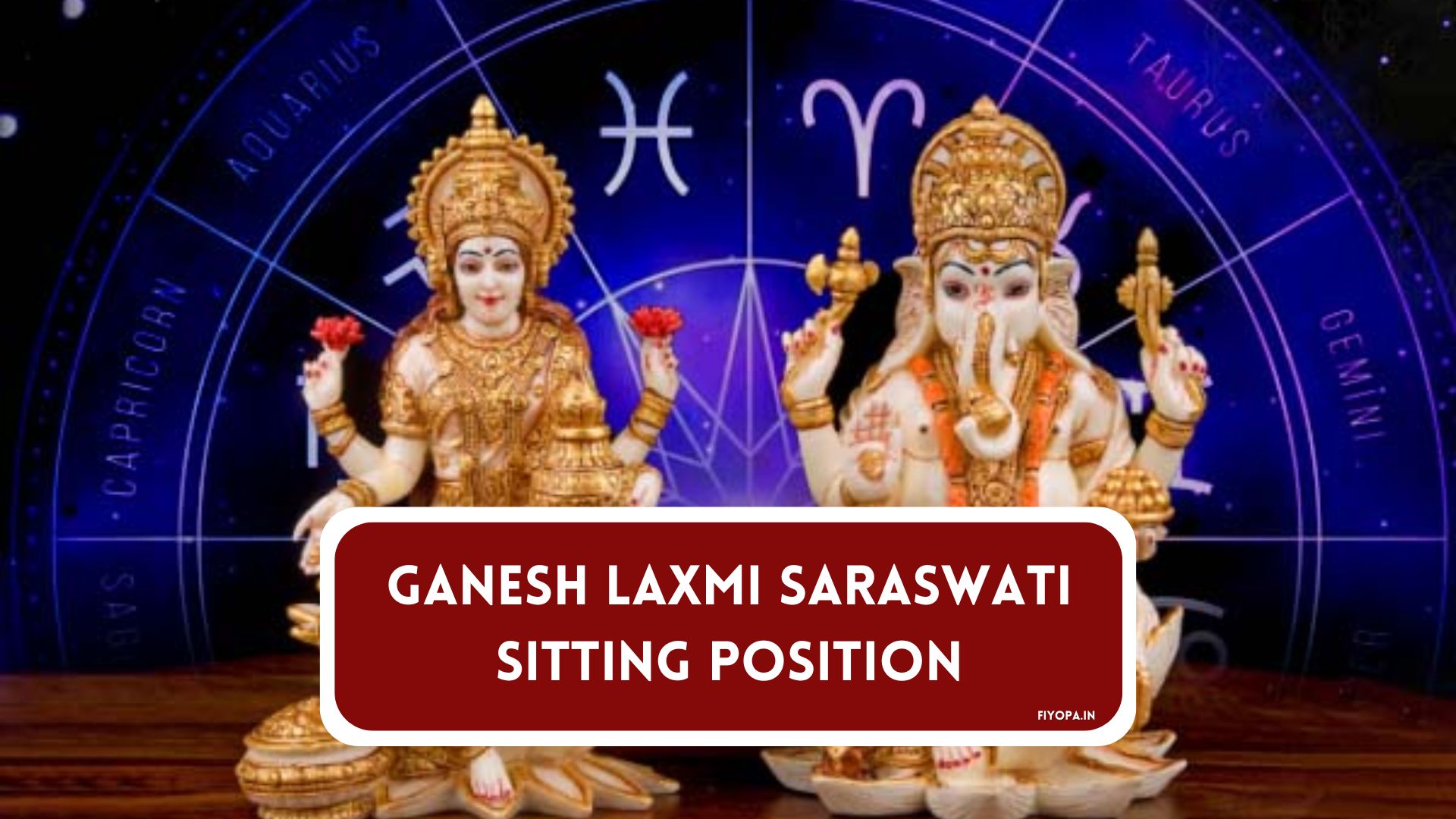Ganesh Laxmi Saraswati Sitting Position: Astrologically

Ganesh Laxmi Saraswati Sitting Position: When it comes to the excellent position of Ganesha Lakshmi in the horoscope, there are several factors to consider that can enhance the flow of positive energy and attract abundance and prosperity. Placing Lord Ganesha and Lakshmi in your home or workplace is not just an ornament; It is believed to have important astrological and spiritual implications.
Here are five auspicious postures that are thought to bring harmony, wealth, and divine blessings.
Ganesh Laxmi Saraswati Sitting Position
| Position | Description |
|---|---|
| Sideways Sitting Position | Symbolizes harmony and mutual support, promoting balance and unity. |
| Lotus Pose (Padmasana) | Represents purity, spiritual awakening, and enlightenment, attracting divine blessings. |
| Swastik Pose (Swastikasana) | Highly auspicious, brings good luck, happiness, and success while warding off negative energies. |
| Throne Sitting Position | Signifies authority, power, and majesty, attracting abundance and prosperity. |
| Abhaya Mudra and Varada Mudra | Invokes fearlessness, protection, blessings, and boons, enhancing financial stability and fulfillment of desires. |
Sideways Sitting Position
By placing Lord Ganesha and Lakshmi sitting side by side, facing each other, symbolizing harmony, cooperation, and mutual support, this arrangement promotes balance and harmony and it creates an environment conducive to prosperity and wealth.
Lotus Pose (Padmasana)
Having Lord Ganesha and Lakshmi sitting in the lotus position means purity, spiritual awakening, and enlightenment. This position is believed to invoke divine blessings and attract abundance, wisdom, and spiritual growth in life.
Swastik Pose (Swastikasana)
The swastika pose requires the legs to be cut in such a way that the swastika becomes a symbol. It is considered highly auspicious to place Lord Ganesha and Lakshmi in this place. It is believed to bring happiness, joy, and success as it prevents negative energy and obstacles.
Throne Sitting Position
That Lord Ganesha and Lakshmi are seated on a high throne or platform signifies their royal and divine status. This position represents power, authority, and prestige. Establishing a strong relationship with cosmic forces is believed to attract abundance, prosperity, and success.
Abhaya Mudra and Varada Mudra
Lord Ganesha and Goddess Lakshmi can be depicted with distinctive hand mudras. Lord Ganesha’s Abhaya Mudra symbolizes fear and protection, while Lakshmi’s Varada Mudra signifies blessing and grace. The combination of these resident seals invokes their benevolent energies and the blessings of financial stability, prosperity, and wish fulfillment.
Conclusion:
While these chairs have astrological significance, it is important to note that personal beliefs, cultural traditions, and personal preferences can influence the choice of venue in addition to consulting or eating with an astrologer rituals and customs specific to your culture and traditions afterward can provide additional guidelines for great programs of interest
Adding this position of Lord Ganesha and Lakshmi to your home or workplace can increase the flow of positive energy and attract blessings of prosperity, abundance, and success. Embrace these astrological insights to create a harmonious and prosperous environment.
FAQs:
Ans: The sideways sitting position symbolizes harmony, cooperation, and mutual support, promoting balance and unity.
Ans: The lotus pose represents purity, spiritual awakening, and enlightenment, attracting divine blessings and abundance.
Ans: The Swastik pose brings good luck, happiness, and success while warding off negative energies and obstacles.
Ans: The throne sitting position signifies their royal and divine status, attracting authority, power, abundance, and prosperity.
Ans: The Abhaya Mudra symbolizes fearlessness and protection, while the Varada Mudra signifies blessings and boons, enhancing financial stability and the fulfillment of desires.
Related Read:- Rahu Mahadasha Worst Years: Know All About







